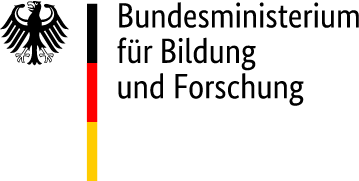Jean-François Séguier was not one of the great figures of the Enlightenment, but he was a very typical one. Hailing from Nîmes, he was an antiquarian, a natural historian, and one of the many bibliophiles who were to be found in the French provinces. He had gained a certain degree of fame as a long-time companion and collaborator of Scipione Maffei in Verona, as the author of a botanical bibliography (1740) and a Flora of Verona (1745), and as a collector of fossils and inscriptions. None of this would have brought him lasting fame had it not been for his extensive papers. The dixhuitièmistes became aware of him mainly thanks to Daniel Roche’s Les Républicains des Lettres (1988). The analyses and maps that Roche produced on the basis of Séguier’s correspondence and his notebook of visitors were groundbreaking for subsequent studies on the network of scholars. Five books have already been dedicated to Séguier: Elio Moisele’s examination of his library (1981), two anthologies by Moisele (1987), and a work by Gabriel Audisio and another by François Pugnière (2005) devoted to different facets of his scholarly life. Emanuelle Chapron, the author of the present book, has edited an anthology of Séguier’s correspondence (2019) together with François Pugnière, as well as his carnets des visiteurs (2008).
The author rightly notes that these and similar works are often too specialized to provide comprehensive explanations. Her approach is to look at the whole range of Séguiers’ papers; she seeks out the places where »les pratiques d’écriture collent à la vie« (18) and thus aims to understand the scholar’s practice. To do so, Chapron takes two different approaches. In the first approach, i.e., the first four chapters, she provides a biographical outline, describing the central stages of Séguier’s life: The Grand Tour with Maffei (chapter 1), their collaboration in Verona (ch. 2), his return to Nîmes (ch. 3), and the remaining 30 years of his scholarly life (ch. 4). True to her approach and the title of the book, Chapron reconstructs these stages as a »life in papers«. This allows us to understand, for example, how Séguier took notes on his travels but somewhat lost himself in the listing of places of interest without adding any personal perspective. In the end – presumably dissatisfied with the resulting text – he titled the manuscript »Fragments de quelques notes« and left it untouched. It is precisely such manuscripts, which are not clearly and linearly oriented towards publication as an end result, that are of particular interest and probably more revealing of the working methods and scholarly projects than those preceding printed works. In Séguier’s case, these include a catalog of plants and a plan of the Jardin du Roy from 1734, a diary of sowing, a plan of his orchard, a catalog of his library, and lists of inscriptions – some of which Maffei annotated – as part of a long-standing plan for an »index absolutissimus« of all published inscriptions. The fact that this magnum opus never came to fruition is an expression of the »illusion of exhaustiveness« (64) with which Séguier was already confronted in Paris in the 1730s.
The four chapters arranged in biographical order are followed by a further set of four chapters focusing respectively on the library (chapter 5), the collected papers (ch. 6), the correspondence (ch 7), and the notebook of visitors (ch. 8). In the last of these, Chapron discusses other practices such as the lending of books, the »double« life of letters after their receipt, and the cabinet as a meeting place for visitors. In a concluding chapter, the author examines the fate of Séguier’s estate after his death and points to an aspect that is often not critically reflected upon: it was not only scholars who shaped a certain narrative of their work through what they preserved of themselves; posterity, too, actively promoted new narratives through preservation, destruction, and rearrangement.
With her book, Chapron provides a convincing analysis of Séguier’s »vie dans les papiers«. We can understand how the Nîmois used pen and paper to collect, produce, organize, and disseminate different forms of knowledge. Chapron – who is herself involved in the digital edition of Séguiers’ correspondence (https://seguier.nakala.fr/) – points out that by relying solely on digital platforms, we run the risk of creating overly simplistic links between documents – or overlooking them altogether. Séguier himself spoke of the »chaos« of his papers. Even if he was merely repeating a scholarly cliché, Chapron’s book makes it clear that the complexity of the papers should not be underestimated and that a precise examination of the material circumstances is necessary in order to understand the scholar’s practices.
There are two perspectives that could have been further explored in the book. On the one hand, there is the relationship between the papers and the collections, at least those that have been partially preserved. Of course, the fossils, medals, and herbarium are mentioned in the book, but they are not taken seriously in their materiality in the same way as are the papers. On the other hand, Chapron deliberately limits herself to Séguier’s scholarly practice and does not write an intellectual biography, such as Laurence Brockliss’s book on Séguier’s kindred spirit in Avignon, Esprit Calvet. She does not, for example, discuss what kind of conception of knowledge guided Séguier in his goal of an »index absolutissimus« or how his Bibliotheca botanica, a 600-page bibliography arranged alphabetically by author, should be situated historiographically. Was this index project conceived out of respect for the tradition of the Republic of Letters, as perhaps expressed in his use of Tournefort’s nomenclature? These questions are less aimed at situating Séguier in the history of ideas but rather at better understanding why scholars like him devoted themselves to their work throughout their lives. Answering these questions would have been a perfect way to round off this cleverly structured, well argued, and stimulating book.
Zitationsempfehlung/Pour citer cet article:
Hubert Steinke, Rezension von/compte rendu de: Emmanuelle Chapron, La vie dans les papiers. Jean-François Séguier (1703–1784), Basel (Schwabe Verlag) 2024, 272 p., 2 ill. en n/b, 27 ill. en coul. (Heuristiques, Jean-François Bert, Jérôme Lamy, 3), ISBN 978-3-7965-5056-0, CHF 32,00., in: Francia-Recensio 2025/2, Frühe Neuzeit – Revolution – Empire (1500–1815), DOI: https://doi.org/10.11588/frrec.2025.2.111319








